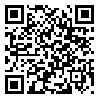BibTeX | RIS | EndNote | Medlars | ProCite | Reference Manager | RefWorks
Send citation to:
URL: http://hakim.tums.ac.ir/article-1-1040-en.html

 , Yarahmadi M
, Yarahmadi M 
 , Mesdaghinia A
, Mesdaghinia A 
 , Younesian M
, Younesian M 
 , Jaafarzadeh Haghighifard N
, Jaafarzadeh Haghighifard N 
 , Naimabadi A
, Naimabadi A 
 , Salesi M
, Salesi M 
 , Naddafi K *
, Naddafi K * 

Shahsavani A(PhD)1,2, Yarahmadi M(MSc)3, Mesdaghinia A(PhD)4, Younesian M(PhD)2,4, Jaafarzadeh Haghighifard N(PhD)2,5, Naimabadi A(MSc)6, Salesi M(PhD)7, Naddafi K(PhD)2,4 *
1 Department of Environmental Health Engineering, School of Health & Nutrition,
Shiraz University of Medical Sciences, Shiraz, Iran
2 Center for Air Pollution Research (CAPR), Institute for Environmental Research (IER),
Tehran University of Medical Sciences, Tehran, Iran
3 Environmental & Occupational Health Center, Iranian Ministry of Health and Medical Education, Tehran, Iran
4 Department of Environmental Health Engineering, School of Public Health, Tehran University of Medical Sciences, Tehran, Iran
5 Department of Environmental Health Engineering, Ahvaz Jondishapour University of Medical Sciences, Ahvaz, Iran
6 Department of Environmental Health Engineering, North Khorasan university of Medical Sciences, Bojnord, Iran
7 Department of Biostatistics and Epidemiology, Baqiatollah University of Medical Sciences, Tehran, Iran
Received: 19 Sep 2011, Accepted: 23 Jul 2012
Abstract
Introduction: Dust storms which changes climate have harmful effects on health and economy. Dust can increase rate of meningitis, asthma, and virus-caused diseases. It also damages DNA of skin and lung cells. The purpose of this study was to depict the situation of the dust storms entering Iran.
Methods: Data on dust phenomenon during past 50 years (1961-2007) were obtained from the Iran Meteorological Organization. Data on the concentration of suspended particles and dust during 2001-2009 were obtained from the Environmental Protection Agency, Iran. To validate the data gathering instruments, the High Volume Air Sampler model PM10 and the Envirocheck model 1.07 were set up in the National Institute of Health Research, Ahvaz station. Data were gathered in six days and in dusty days of the first six months of 2010. Data obtained from the two organizations were compared with each other using the Excel and SPSS-16.
Results: The year 2009 was the dustiest year with an average of 42.8 dusty days in the last three years. The dustiest days with 107 and 102 dusty days were seen in Kermanshah in 2008 and Khuzestan in 2009, respectively. The highest concentration of dust was recorded in Bushehr in 2009 with a concentration of 9900 µg/m3. The average concentration of all floating particles in Khuzestan equaled 7576 µg/m3 during the three years. The longest dusty hours happening in Khuzestan lasted for 144 hours. The average hours for each dust event were 32 hours in this province.
Conclusion: Concentration of dust particles in dusty days have significantly increased in all provinces. The mean and standard deviation of particle concentration in Ahvaz is 16.5±11 times more than the standard concentration rates in the country. Considering the severity of these phenomena and its harmful effects on health of dwellers in the region, policy-makers should take necessary measurements.
Key words: d ust Storm, Iran, duration, frequency, Khuzestan
Please cite this article as follows:
Shahsavani A, Yarahmadi M, Mesdaghinia A, Younesian M, Jaafarzadeh N, Naimabadi M, et al. Analysis of Dust Storms Entering Iran with Emphasis on Khuzestan Province. Hakim Research Journal 2012 15(3): 192- 202.
* Corresponding Author: School of Public Health, Tehran university of Medical Sciences, Enghelab St., 16 Azar street, Tums, Tehran, Iran. Tel: +98- 912- 2022363, Fax: +98- 21- 66707315, E-mail: knadafi@tums.ac.ir
Received: 2012/11/28 | Published: 2012/10/15
| Rights and permissions | |
 |
This work is licensed under a Creative Commons Attribution-NonCommercial 4.0 International License. |



